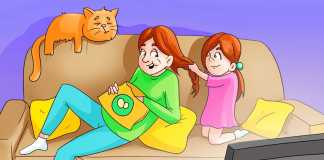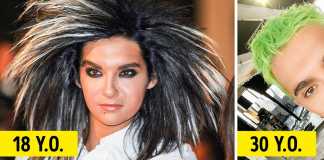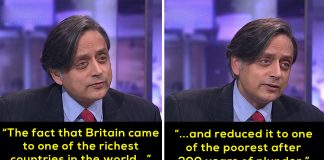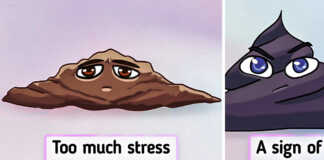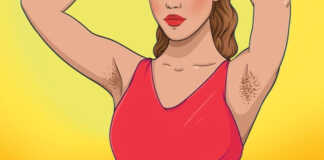We have already learned to separate fantasy from reality and don’t believe all the promises that manufacturers generously try to use to convince us to buy their products. But visual content still influences our brains. When we see a freshly-made burger on the screen, we start to feel hungry, a steaming coffee mug makes us almost “feel” the smell of freshly-brewed coffee, and gorgeous hair in a shampoo commercial causes envy right away.
We at The Elite Indian gathered the most popular advertisement tricks that can fool even the most skeptical audience.
Conscientious fast-food chains use real burgers in their advertisements but…
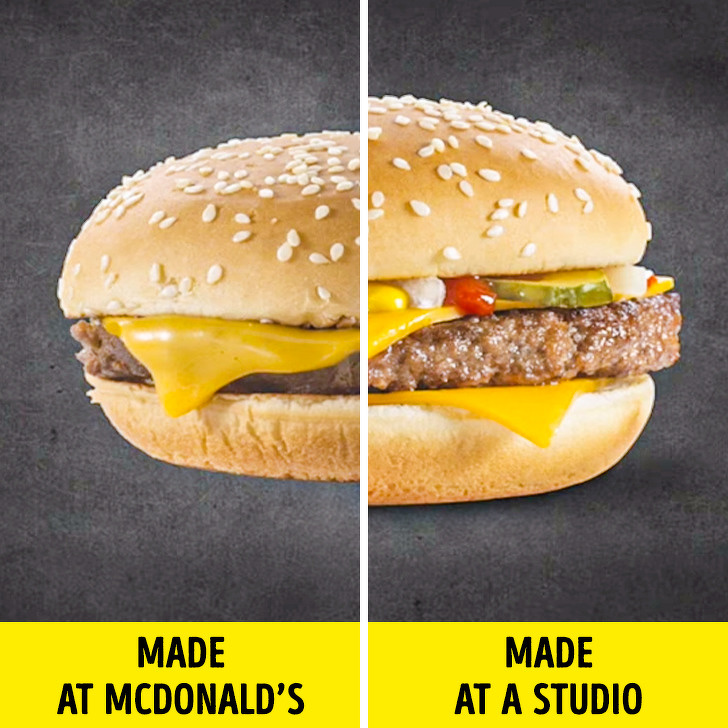
…They are different from the ones we usually get at fast food restaurants. This happens because all the ingredients in these burgers are “arranged” in a perfect way. Big Macs that are used for a photoshoot are cooked right in the photo studio, but from the same products as the usual ones. The secret is that the ingredients are displayed in such a way that the viewer can see all of them clearly. So the buns get moved a bit backward and the photographer may add some more ketchup or melt some extra cheese.
Food stylist, Mary Valentin, claims that they don’t use inedible substances to make the food look better anymore, because it’s considered an unethical and outdated approach. And more customers want to order the dish that looks exactly like the one in the photo.
Photographers use undercooked food when taking a picture for fast-food restaurants.
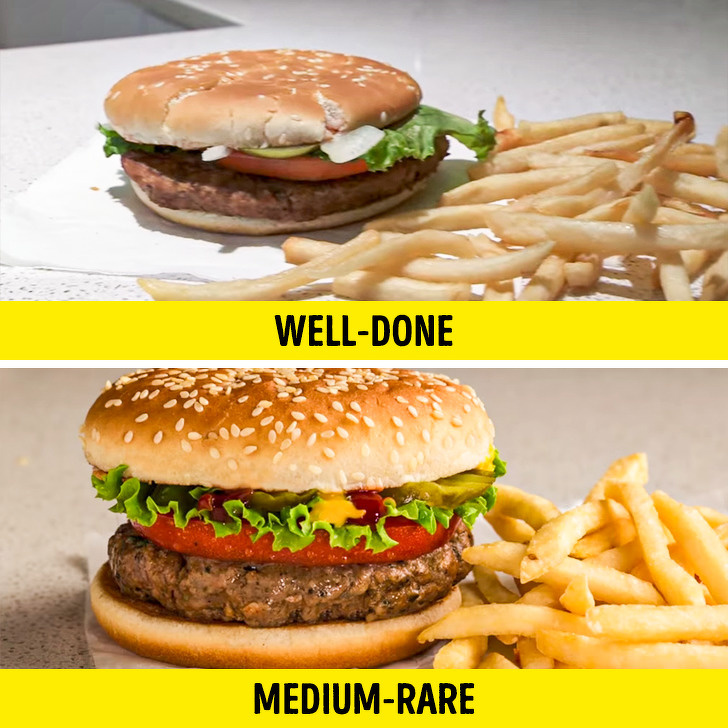
Food stylist, Ellie Stern, shares that she prefers to use medium-rare meat patties when taking a picture of a burger. This trick makes them look juicier.
Coffee foam is made with an aquarium filter.
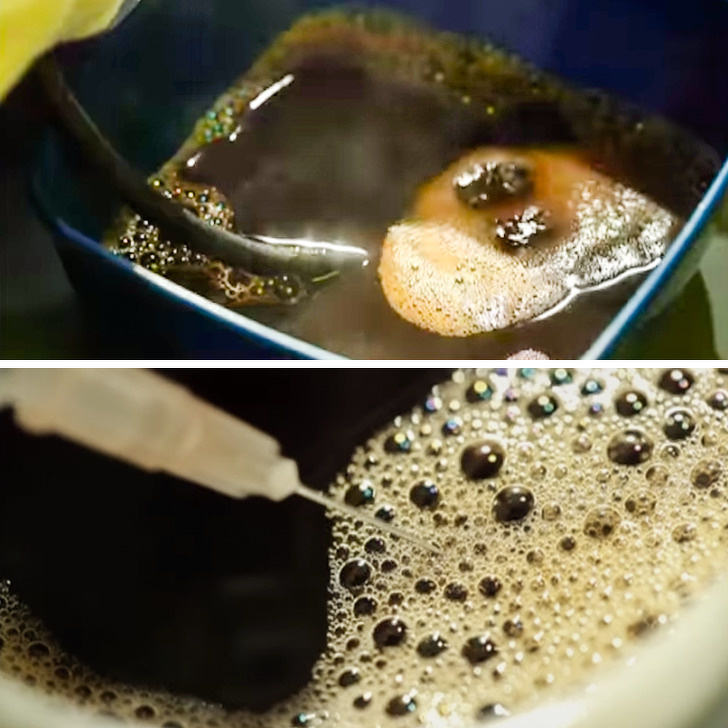
You’ve probably heard that the foam for drinks is made using inedible things like a dishwashing liquid or laundry detergent. We don’t know if this approach is really widespread, but it certainly doesn’t work when an actor has to take a sip of the coffee.
In this situation, coffee foam is made of instant coffee, an edible foaming agent, and an aquarium filter. Then the stylist uses a syringe to get rid of some of the bubbles or add some more. This is a lot of painstaking and delicate work!
Tea is made more colorful with food coloring and is brewed in alcohol.
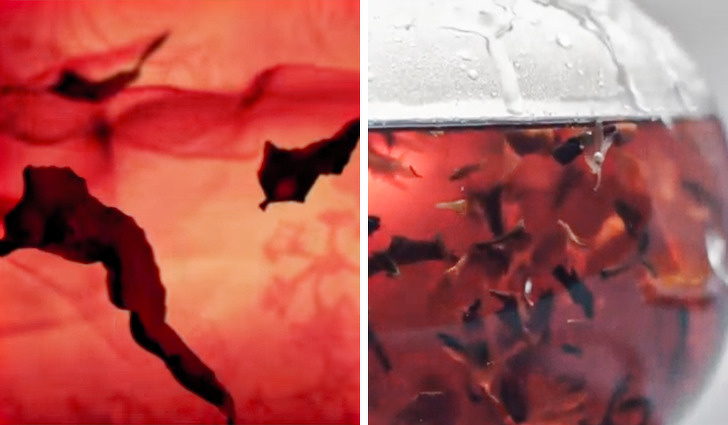
© Reklamnaya pausa / YouTube
Tea gets placed in boiling water with food coloring in saturated red-brown tones. Then food stylists dry out the tea leaves with a hairdryer and put them in alcohol. This helps the tea leaves to get rid of the food coloring more quickly and create the “brewing” effect. To make the tea leaves move in a beautiful “dance-like” way, stylists use a special propeller at the bottom of the kettle.
The water in the pan doesn’t really boil.
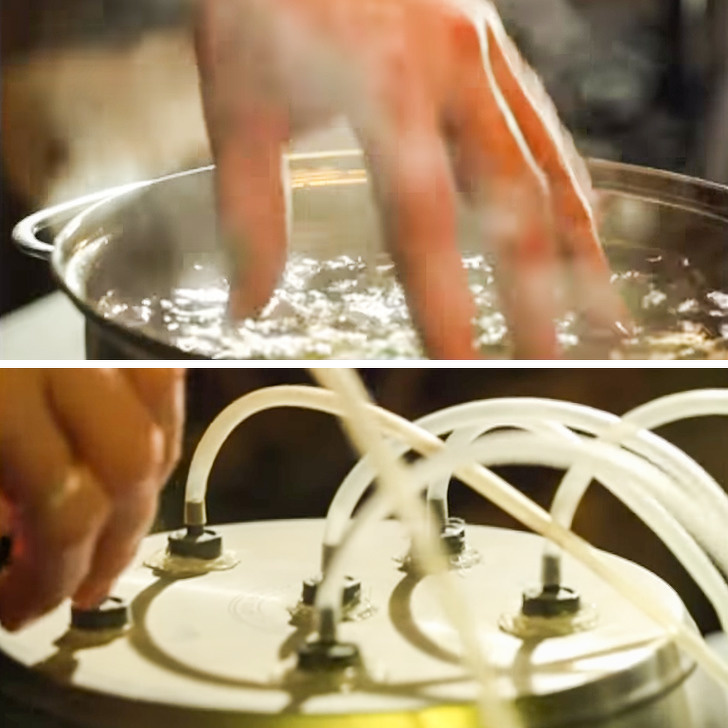
If real boiling water was used in advertisements for instant soup, noodles, or pasta, the camera would get foggy pretty quickly. The director may also want to refilm some scenes, but the water will keep boiling away and there’s a huge chance you might burn yourself. So the “boiling” water effect is created with a special compressor that pumps air into the water through tubes connected to the bottom of the pan.
The steam from the food plate is created with the help of a fog machine.
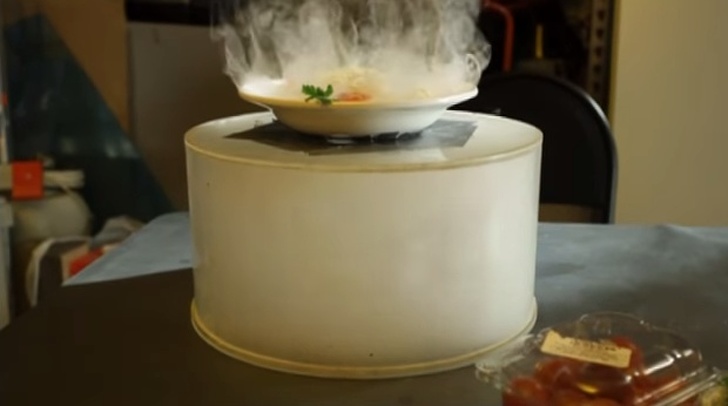
The bottom of the plate gets removed and the rest of it is placed on a plastic box with holes and a fog machine inside of it. Then the stylist puts food on the plate. The director adds the fog with the help of a remote control and can change is intensity.
There’s no meat in the dumplings that are used in commercials.
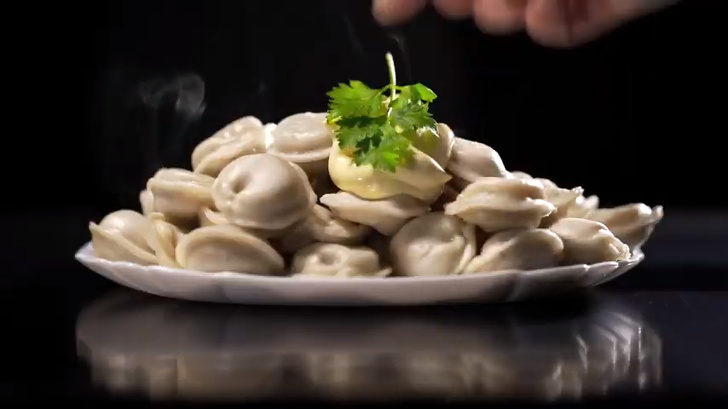
Minced meat can be seen through the dough and it gives the dumplings an unattractive greenish hue. So instead of meat, food stylists use an inedible substance that is tinted with iodine or solid oil.
To make a bottle look foggy, food stylists spray some deodorant on it.
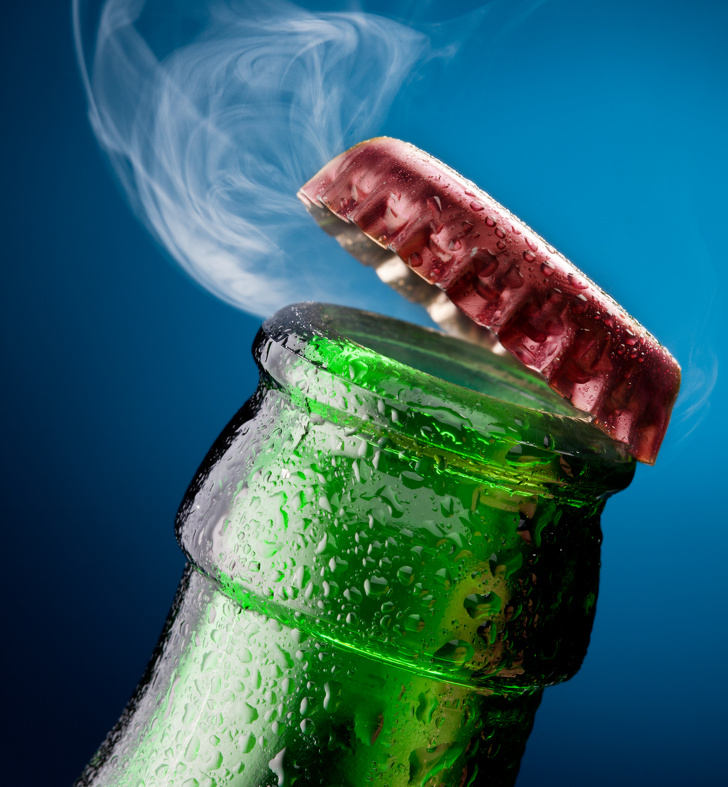
They use a spray with glycerin to add some condensation. Food stylists also use synthetic ice. To make a bottle opening look cool, the bottle gets fixed on a tripod that makes it motionless. If the final result doesn’t look good, it’s ok: the lid can be returned back to its place with the help of a bottle capper.
In beer advertisements, it’s essential to show the foam. And taking into consideration the current trend with natural products, food stylists try not to add chemicals to the beer and instead just use a pinch of salt and a cocktail mixer to make foam.
Special robots help film advertisements.
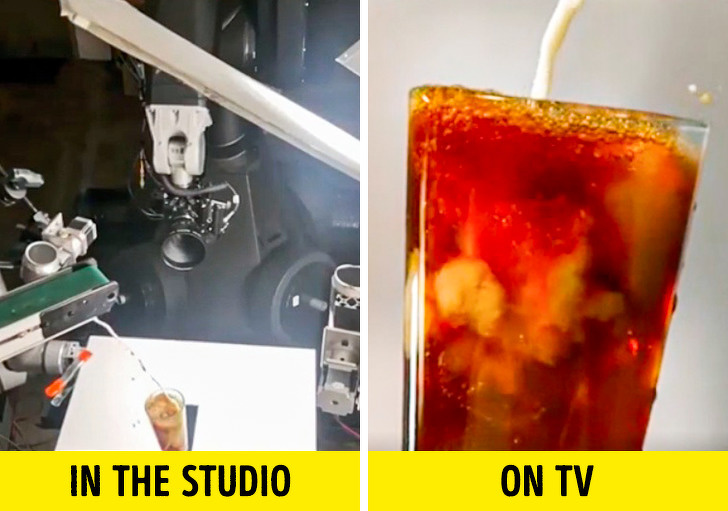
They can pour drinks.
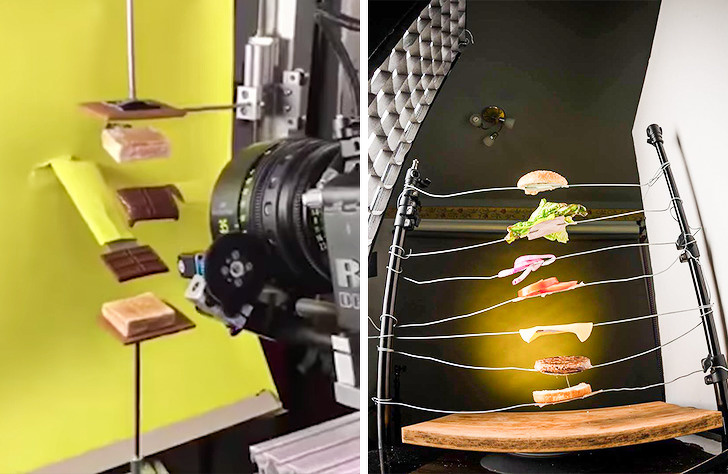
They know how to arrange multi-layered sandwiches and desserts in the perfect way.
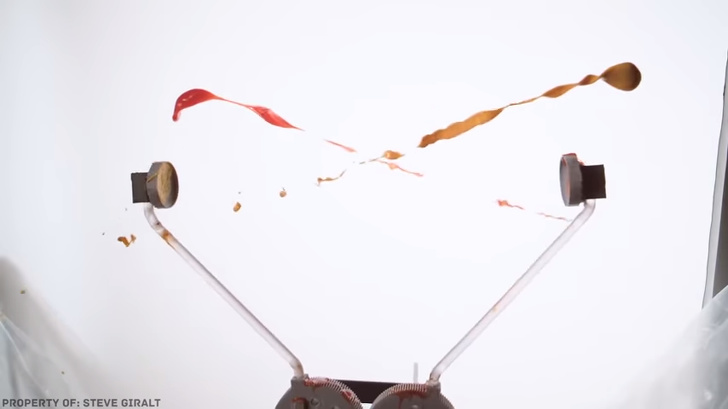
They can spray mustard, ketchup, milk, and other liquids.
And do other fun stuff.
Directors use a chromakey and an assistant wearing a green jumpsuit to make the hair move beautifully in a shampoo commercial.
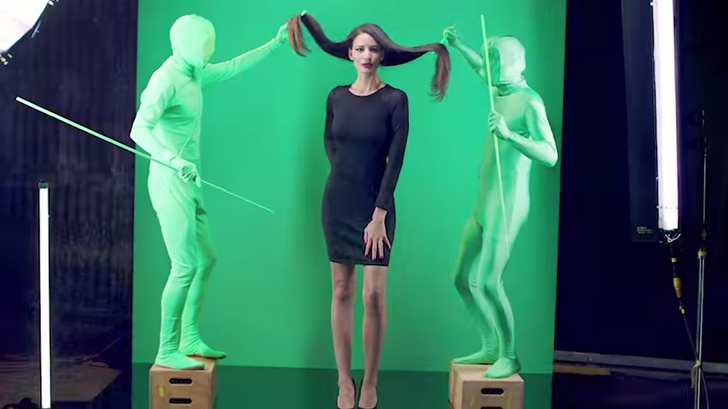
Assistants use special sticks to lift the model’s hair and a hoop that creates the effect of springy hair when the model walks.
Long hair is often fake.
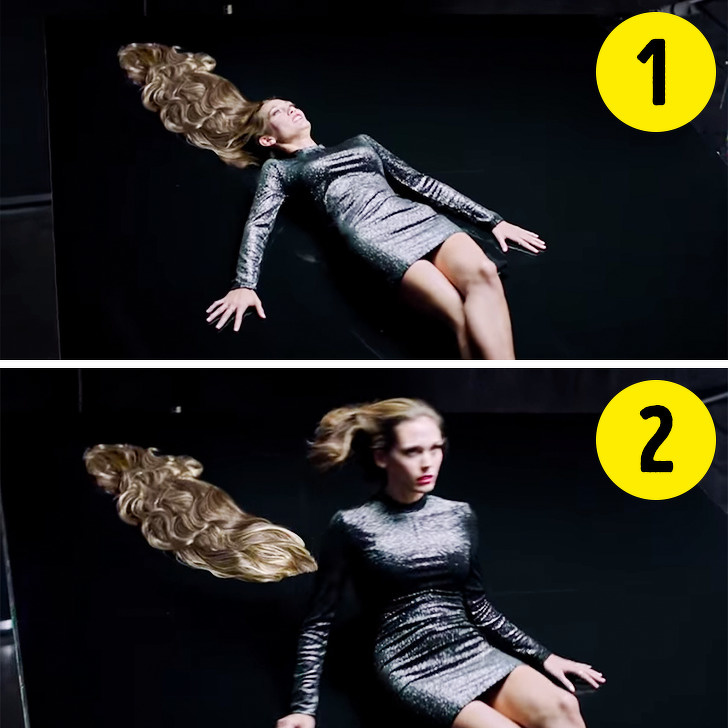
Long and beautiful hair is more likely to be fake. Directors often show a model who is lying on her back with her silky and shiny hair on the floor. But this hair often doesn’t belong to her. And we’ll never get this result with our hair, like they promise in the commercial, because no hair product can do that. It’s the right lighting and the mirrors that help to create the illusion of a glossy shine on the hair.
And to boost hair volume, stylists use special foam balls that are attached under the hair.
Animals are replaced by “dubbing actors” during rehearsals.
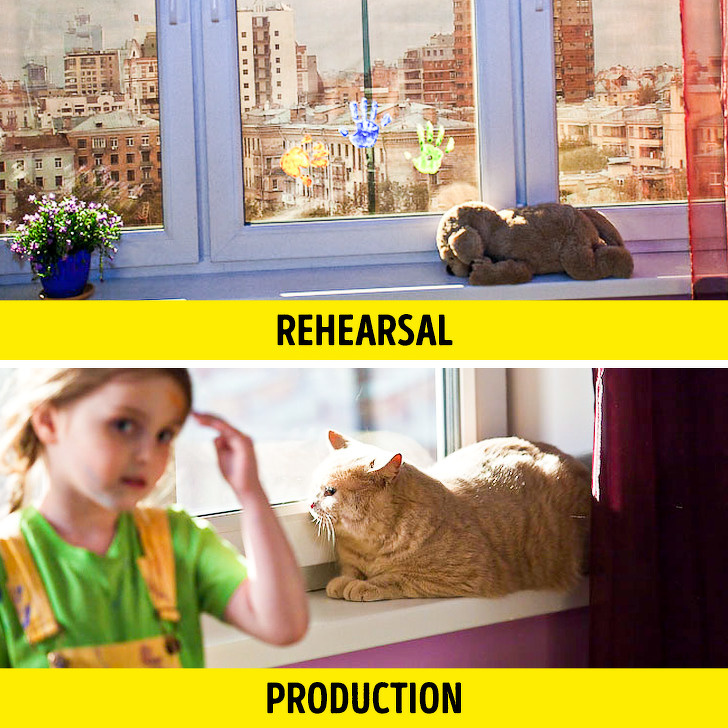
© detali / LiveJournal
It’s difficult to use animals in advertising. There are even special agencies that hire pets for filming. Usually, there’s a dubbing animal for every animal actor, and all rehearsals are conducted without any animals at all — they are replaced by a toy or a mannequin.
To make a cat run in the right direction, assistants use its carrier.
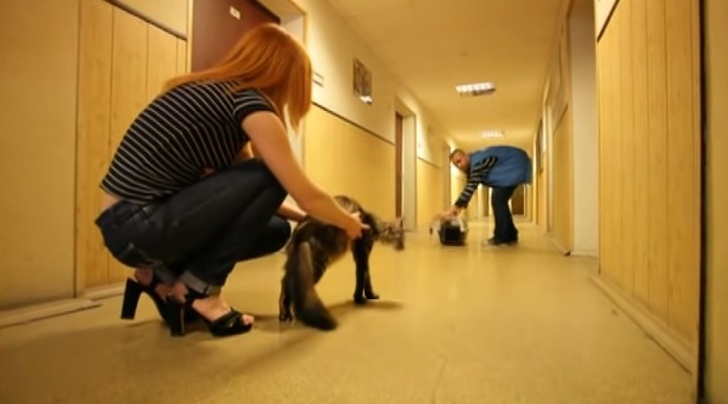
To force a cat to listen to you is an almost impossible task. So producers have to use ingenious tricks to fool the animals. For example, to make a cat run in the right direction (like, toward a bowl with food), they put its carrier behind the bowl. The cat sees its safe place and runs to it.
The Blackbird car is used in most car commercials, and the exterior and interior of the car get improved later using the computer.

The Blackbird car can take on any technical characteristics with the help of a special computer program. The wheelbase can be made shorter or longer, the clearance can be both increased or decreased, and the wheels can be almost any diameter.
Women who are chilling in a bathtub stay dry.
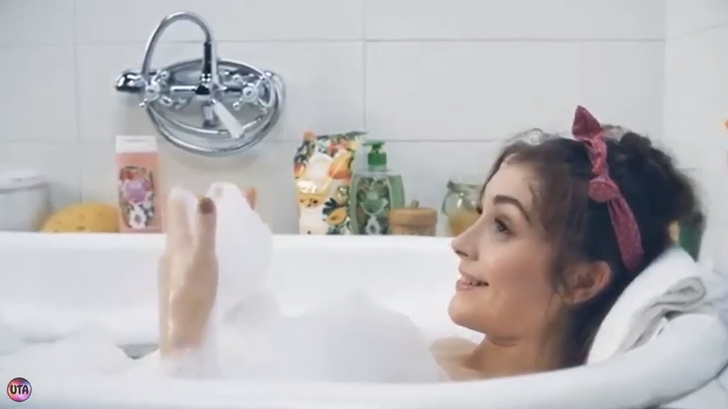
The filming of a commercial may take up to several hours. And if an actress gets undressed and lays down in a real bathtub, she’ll freeze. Steamy skin also doesn’t look very attractive onscreen and the camera will fog up because of the steam. That’s why there’s no water in these bathtubs.
An actress only reveals her shoulders. The rest of her body is covered with a plastic film. The bathtub gets filled with something soft and the actress gets covered with a white fabric. After that, the bathtub is filled with foam from the same machine that is used at a foam party.
Can you justify these tricks that are used in advertisements because they help to evoke certain emotions from the audience or do you prefer that the products look more natural and realistic? What is a line that can’t be crossed when working on the promotion of any product?
Preview photo credit SuaveBeauty / YouTube

